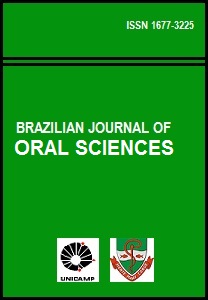Abstract
Aim: To evaluate in vivo the association of hypericum (Hypericum perforatum), valerian (Valeriana officinalis) and kava (Piper methysticum) with analgesia by assessing their effects in reducing orofacial pain as well as the possible hepatic, hematologic and biochemical alterations induced by regular administration of these extracts. Methods: Orofacial pain was induced in mice with the administration of 2.5% formalin in the upper lip. After 60 min, the animals were treated with saline, carbamazepine and hydroalcoholic plant extracts. The nociceptive intensity was determined by the timing at which the animal remained rubbing the injected area. To assess the hepatotoxic effect, mice were chronically treated for 25 days with saline, carbamazepine and hydroalcoholic extract. The animals were euthanized and the liver weighed, followed by a differential count of leukocytes and measurement of alanine transaminase and alkaline phosphatase. Results: The evaluation of analgesic activity in phase 1 reduced the time of rubbing compared to the control by 86% (0.05 mL/10 g) and 76% (0.10 mL/10 g). In phase 2, the extracts reduced rubbing time by 94% and 85%, respectively. In the evaluation of alkaline phosphatase, the groups treated with extracts at doses of 0.05 mL/10 g and 0.1 mL/10 g increased by 16.1% and 9.5% compared to the control group and a reduction of 8.5% and 9.1% in the evaluation of alanine transaminase respectively. It was demonstrated that in the differential counts showed an increase in eosinophils in the treated group with 0.05 mL/10 g. Conclusions: The use of hydroalcoholic extract of the associated plants reduced the orofacial formalin-induced pain with better results than carbamazepine, at both the neural conductor level of pain (phase 1) and in inflammatory or later pain (phase 2) without presenting hepatotoxicity. The observed eosinophilia is suggestive of a phenomenon called hormesis.
This work is licensed under a Creative Commons Attribution 4.0 International License.
Copyright (c) 2015 Luciana Cristina Nowacki, Paulo Roberto Worfel, Paulo Francisco Arant Martins, Rosane Sampaio dos Santos, José Stechman-Neto, Wesley Mauricio de Souza
Downloads
Download data is not yet available.

